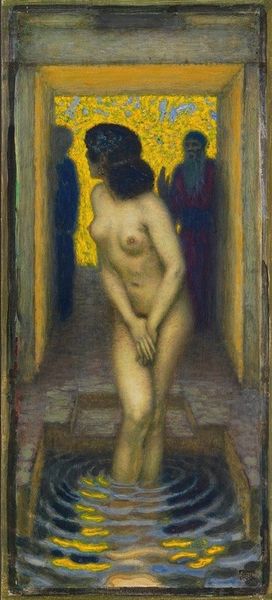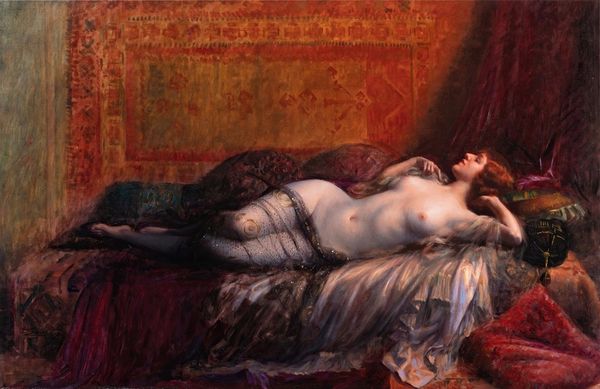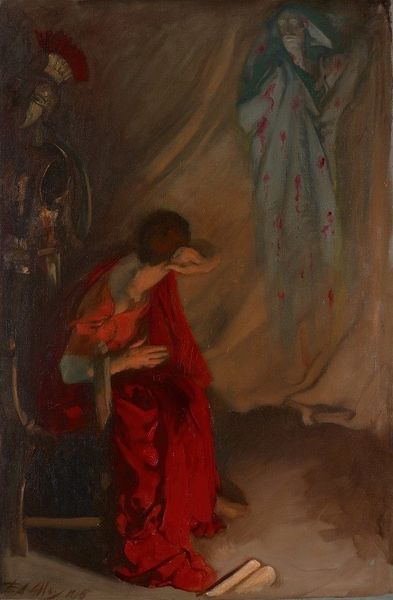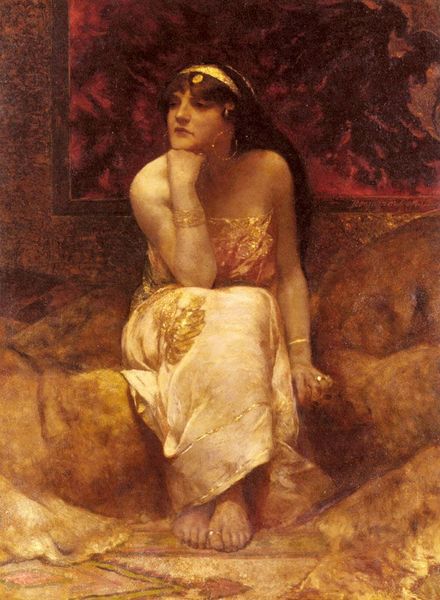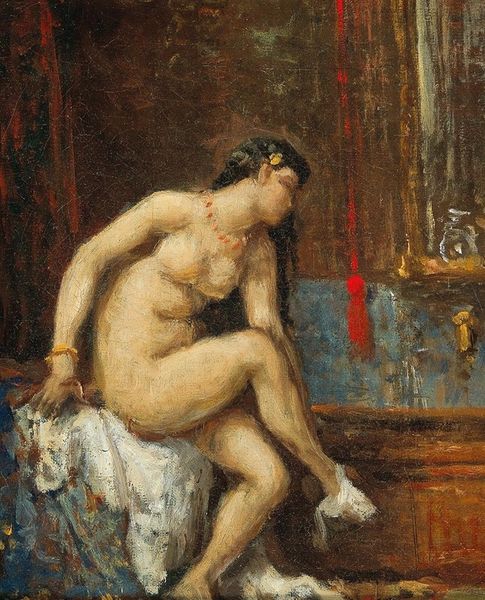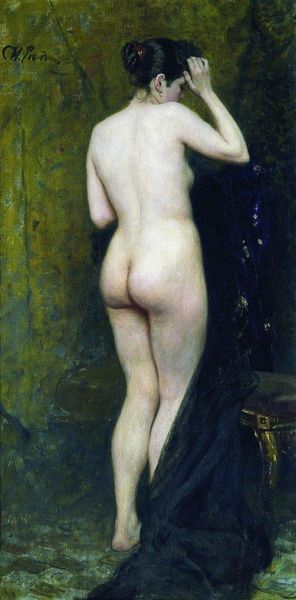
painting, oil-paint
#
allegory
#
painting
#
oil-paint
#
figuration
#
oil painting
#
romanticism
#
mythology
#
academic-art
#
nude
Copyright: Public Domain: Artvee
Herbert James Draper completed "The Gates of Dawn" at the height of the British Empire. The image presents a fair-skinned, semi-nude woman, a common trope in academic painting. But Draper's work is caught in a cultural cross-current. The painting suggests the influence of classical mythology. Draper had a deep interest in the artistic traditions of ancient Greece and Rome. In this context, the nude figure and the architectural setting evoke classical ideals of beauty and harmony. It may also be tapping into fin-de-siècle decadence by associating beauty with something ominous. The gates might suggest that something waits on the other side, something other than the rising sun. Historical sources, such as exhibition reviews and personal letters, provide additional insights into the artist’s intentions, the reception of the artwork, and its place within the broader cultural and intellectual landscape of its time. This is how we may interpret the social and institutional context in which art is made.
Comments
No comments
Be the first to comment and join the conversation on the ultimate creative platform.


